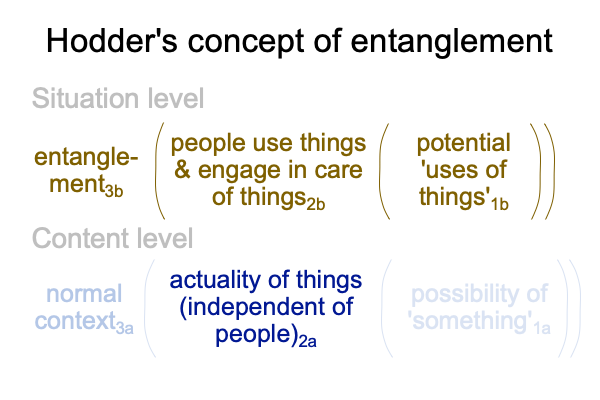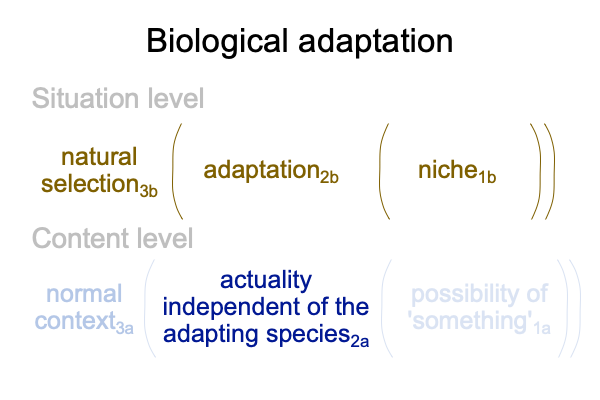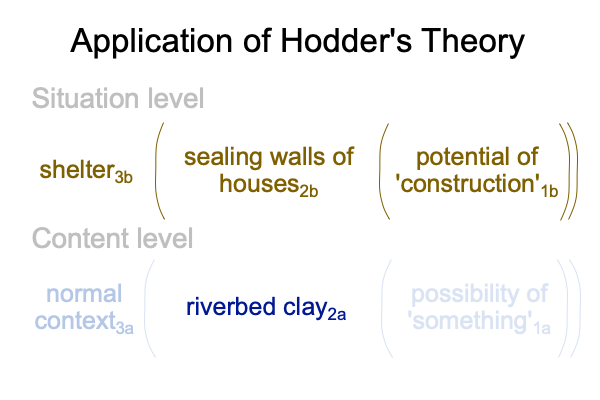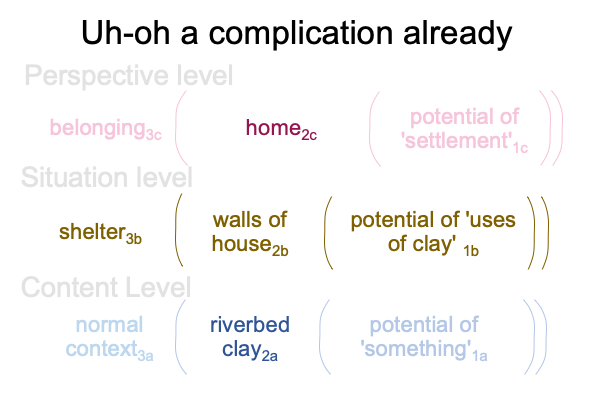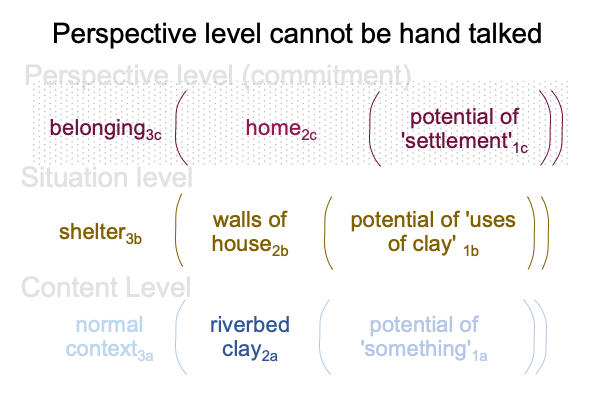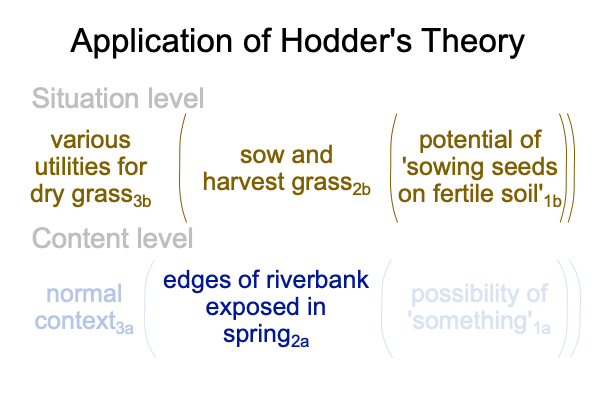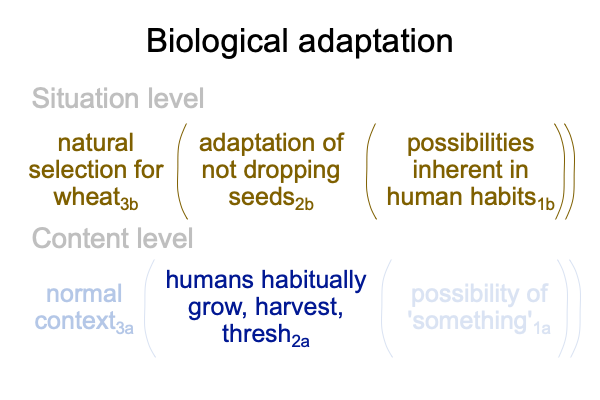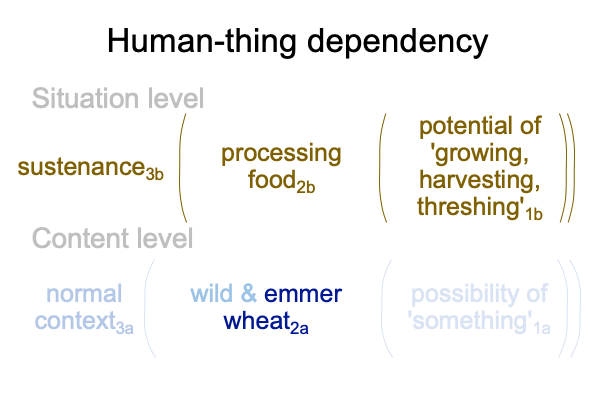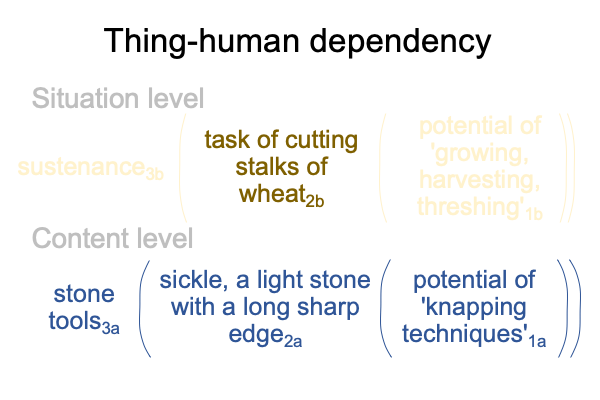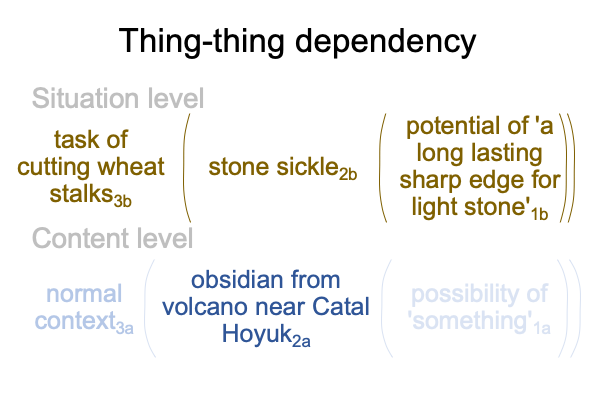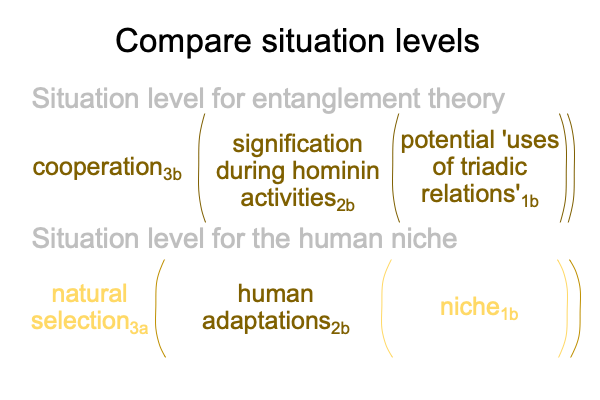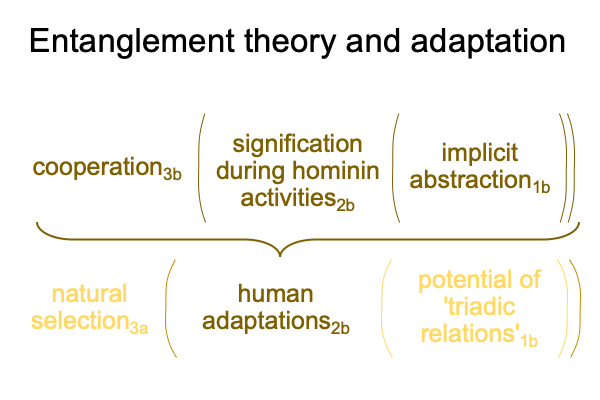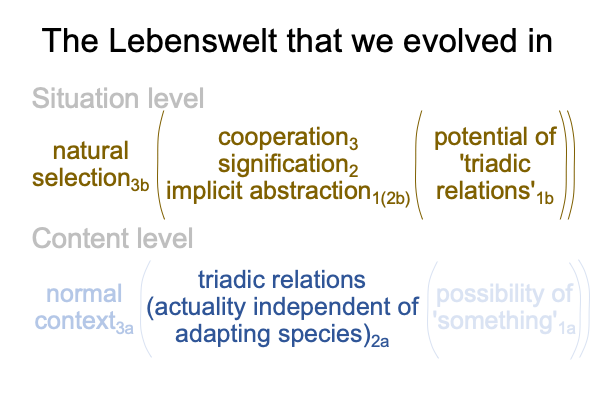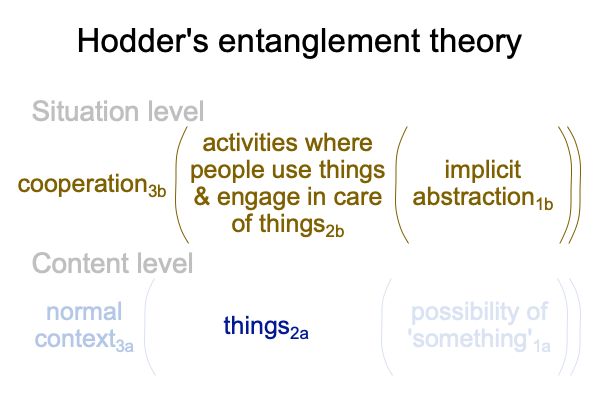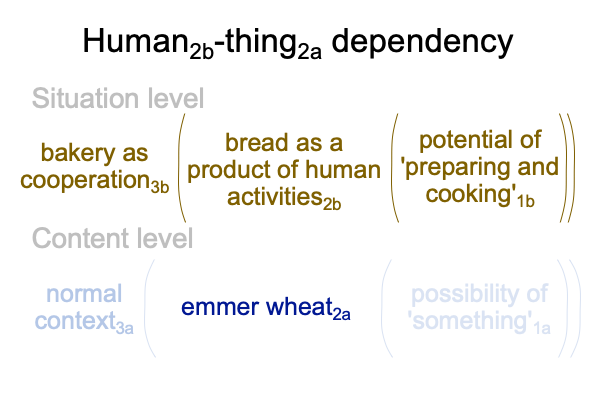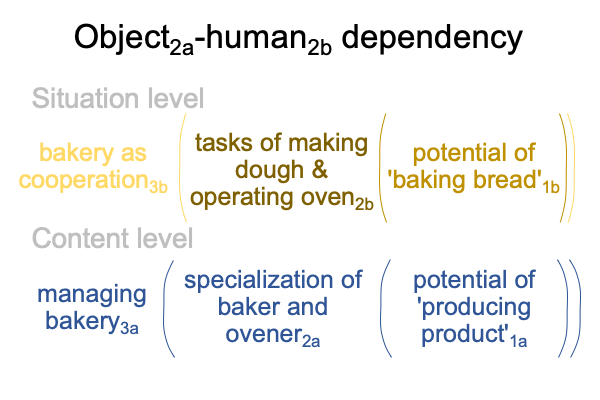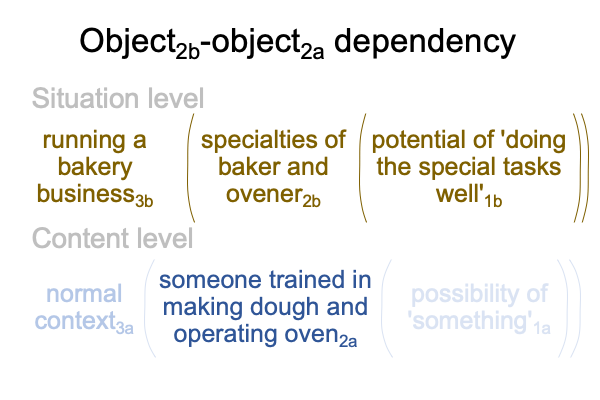Looking at Ian Hodder’s Book (2018) “Where Are We Heading?” (Part 2 of 15)
0016 Hodder’s desires to extend entanglement theory to all of biological evolution.
Am I already there?
The concept of the niche1b entangles the adapting species2b with independent actualities2a (that is, things2a).
Hominins are only doing what biological evolution has been doing for a long time.
But there is a difference.
Unlike most other species, where the actuality independent of the adapting species is a thing or state of things, our species adapts into a purely relational niche. Such is the bold hypothesis of Razie Mah’s masterwork, The Human Niche,available at smashwords and other e-book venues.
0017 Dr. Hodder’s theory of entanglement starts with a thing. A thing is a content-level actuality.
Here is a picture.
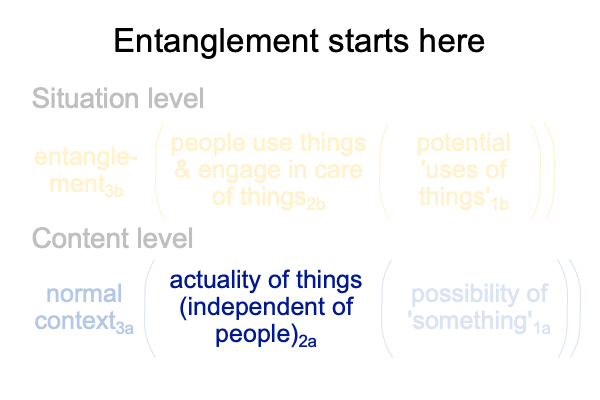
0018 Entanglement starts with an actuality that is independent of people. Only one slot is occupied in the initial configuration. The others remain either empty or nascent. “Nascent” means “yet to be manifested”.
0019 For an example, let me consider a detail about the archaeological excavation that Dr. Hodder supervised (and is, no doubt, still involved), Catal Hoyuk in Anatolia.
The detail2a is riverbed clay. This clay2a has the potential to be used as construction material for the walls of houses in the Neolithic settlement1b. This potential1b goes onto the situation-level, and awakens a corresponding normal context3band actuality2b.
0020 Here is a picture. The lighter colors denote “awakening” as well as emptiness.
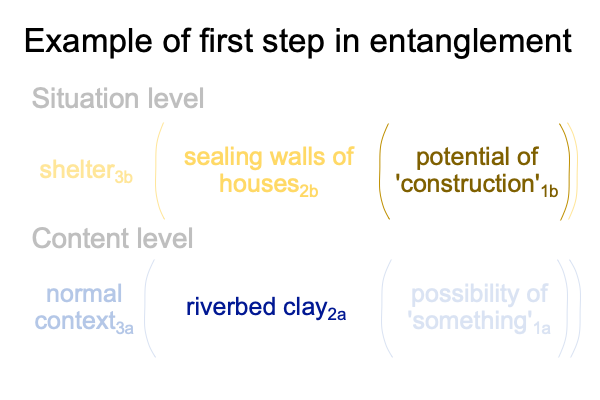
0021 Awakening? Emptiness?
The situation-level normal context3b is obvious to the archaeologist. Shelter is an adaptation2b to a proximate human niche1b. Humans need shelter to protect themselves from all sorts of dangers2a, especially at night. As such, shelters are sensible constructions.
0022 Sensible construction?
For some background concerning this topic, consult Razie Mah’s A Primer on the Category-Based Nested Form and A Primer on Sensible and Social Construction, available at smashwords and other e-book venues.
0023 Dr. Hodder awakens to the sensible construction implicit in entanglement.
This is the entanglement that Hodder wants to convey. Things become useful. Then, humans end up entangled with useful things.

